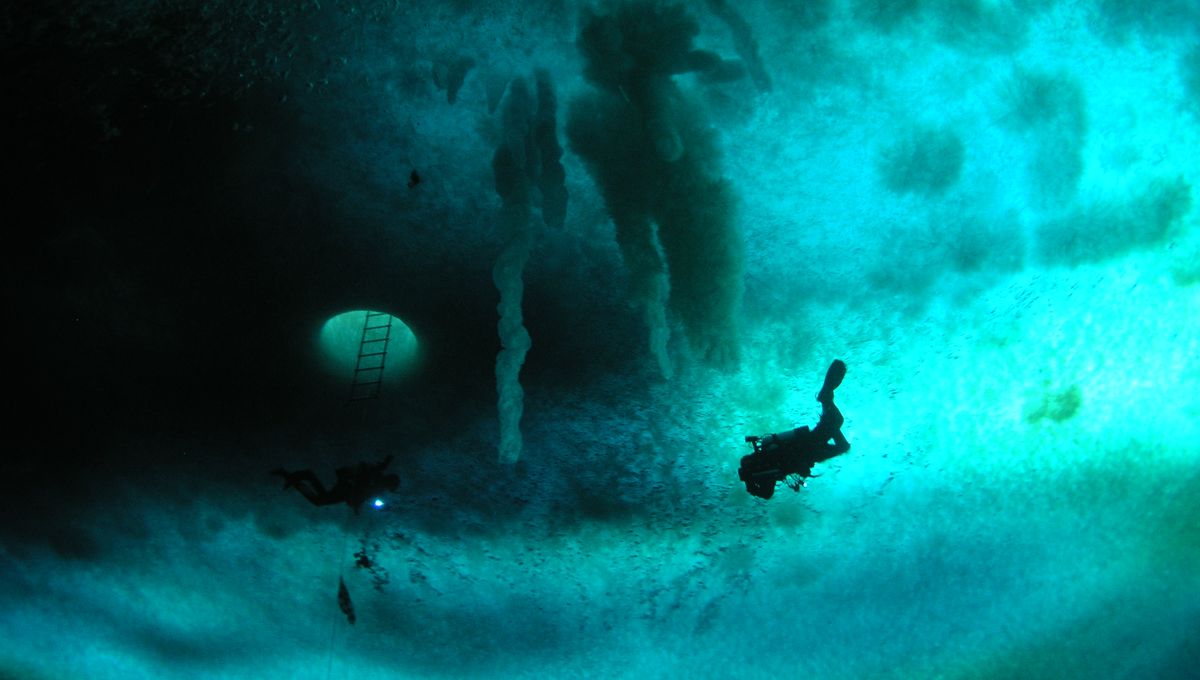
In the secret world below the Antarctic sea ice, salty frozen fingers slowly descend towards the ocean floor. They’re called brinicles, and while they may look similar to the stalactites we find in caves on the surface, they may actually have more in common with hydrothermal vents. But creatures of the deep, beware: anything caught in the path of a brinicle will be frozen alive.
As polar sea ice forms, the salts within the water are separated out from the pure ice crystals and can form pockets of extra-salty brine in channels and fractures within the sea ice. The brine can eventually leak out into the open sea below the ice layer. The extra salts make it heavier than the surrounding water, so it sinks. It’s also even colder than the water around it, so it absorbs heat – enough to push the already near-freezing seawater over the edge.
The result is a streamer of sinking brine that pulls a shroud of frozen seawater around itself as it descends, sometimes all the way to the seafloor if there’s enough brine leaking out and no strong currents to disrupt it. While majestic to look at, it’s not great news for the bottom-feeding critters that inhabit these chilly waters – the brinicle’s icy creep can continue along the seabed, freezing anything unlucky enough to stumble into its path.
Film crews for the 2011 BBC series Frozen Planet captured a large brinicle forming in remarkable detail, and you can see it in all its glacial glory in this video.
As icy projections growing downwards from a solid surface, you can see why people have likened brinicles to stalactites. But a study in 2013 proposed that it makes more sense to think of these structures as “inverse chemical gardens”, and that the way they grow has much more in common with mud volcanoes and hydrothermal vents.
Many in the scientific community believe that hydrothermal vents may have been crucial to the beginnings of life on our planet. It’s one of several theories, and the question is far from settled; but the study authors suggest that brinicles could play a starring role in another school of thought, which proposes that the rejection of salt from sea ice could have produced conditions compatible with the origins of life. Could that also extend to other far-distant worlds? Scientists suspect that Jupiter’s moon Ganymede may be home to an ice-covered ocean – what role might brinicles have played there?
This is all speculation, for now. Brinicles require a perfect confluence of conditions to form, so they’ll always be tricky to study. But as time goes by, we will surely learn more and more about these fragile, frigid “fingers of death”.
Source Link: The Icy Fingers Of Death That Creep Beneath The Frozen Antarctic